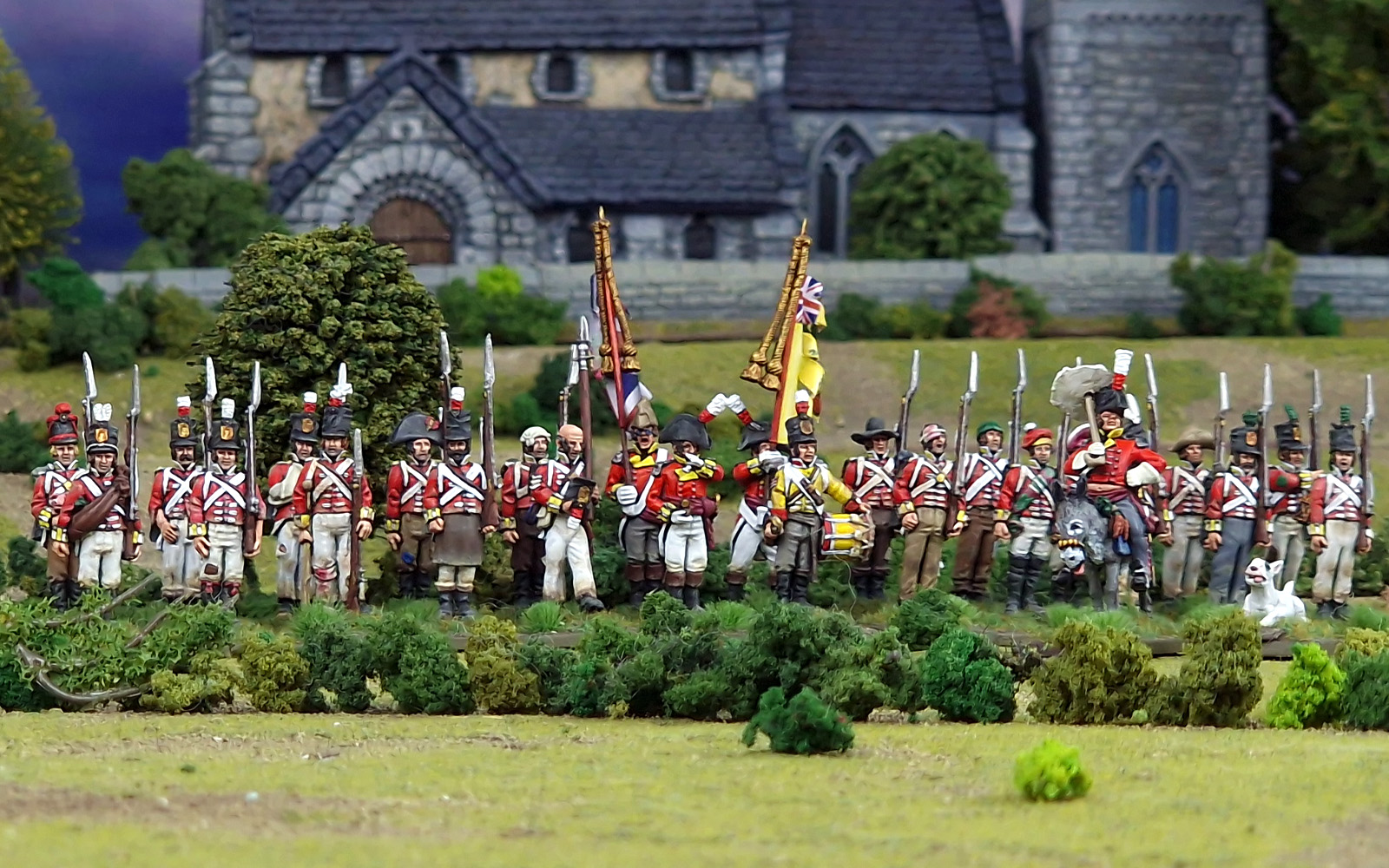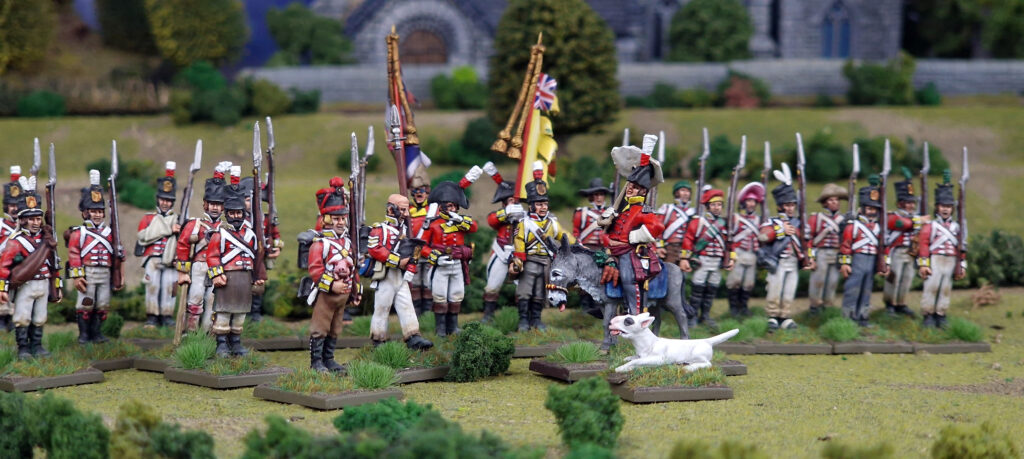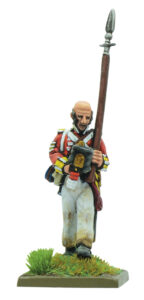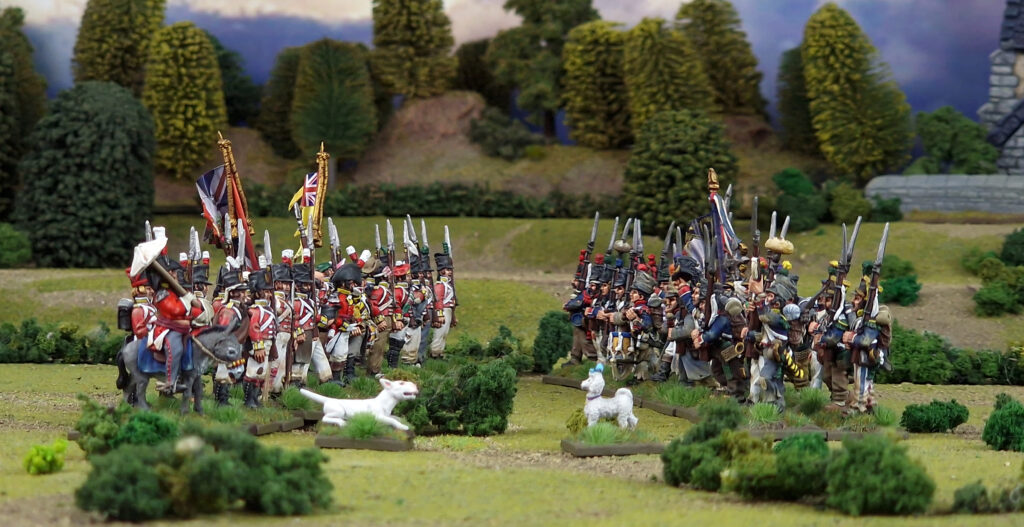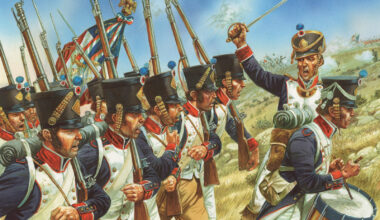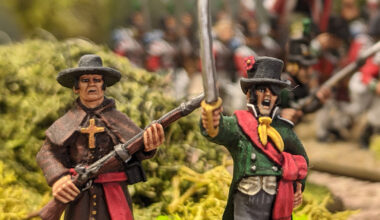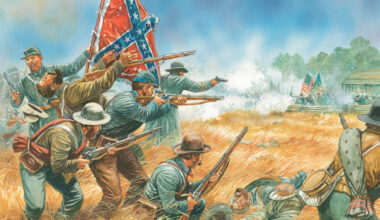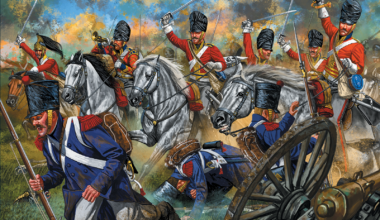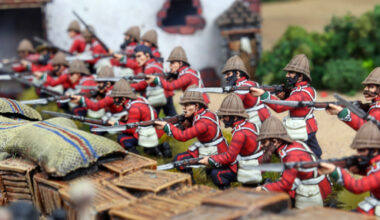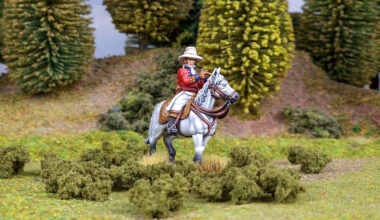Our two Peninsular Veteran boxed sets are not composed of the pristine troops typically associated with Napoleonic wargaming. These are battle-hardened, dishevelled men, haggard from their long campaign on the Spanish Peninsular. Such men have long abandoned the practice of maintaining their uniforms, with discipline but a distant memory. Ragged and patchy, some have had to seek alternative clothing, making do with whatever they can borrow, scavenge or even wilfully pilfer – which was technically punishable by death. These British Veterans exemplify Wellington’s famous description of ‘scum of the Earth’.
From their complete lack of uniformity, a baffling assortment of headwear (including ladies’ bonnets!), and even some plundered livestock, each individual model in this Warlord Resin boxed set has a story to tell in its own right, so much so that we’ve gone so far as to individually name each figure and provide a fictional backstory for the 3rd Battalion of Detachments, since struck from all official records.
During the retreat of the remnants of Sir John Moore’s British forces to Corunna in 1809, it was inevitable that men would become separated from their units. Some fell out of formation due to fatigue, injury, or illness. Others were captured by the pursuing French before escaping or being released. Still more were deserters and malcontents, swept up by British patrols on the road and claiming innocence to avoid the gallows. Given the chaos of the withdrawal, it was often impossible to return these men to their units, and so ‘Battalions of Detachments’ were formed. These units, essentially scratch formations made from whatever men were to hand, could (at least in theory) perform the basic duties of a line battalion, and served to provide some accounting of the men who had gone missing from their parent regiments. Two such battalions are well-attested, but recent research by one A. McWalter has uncovered that there was very likely a third as well!
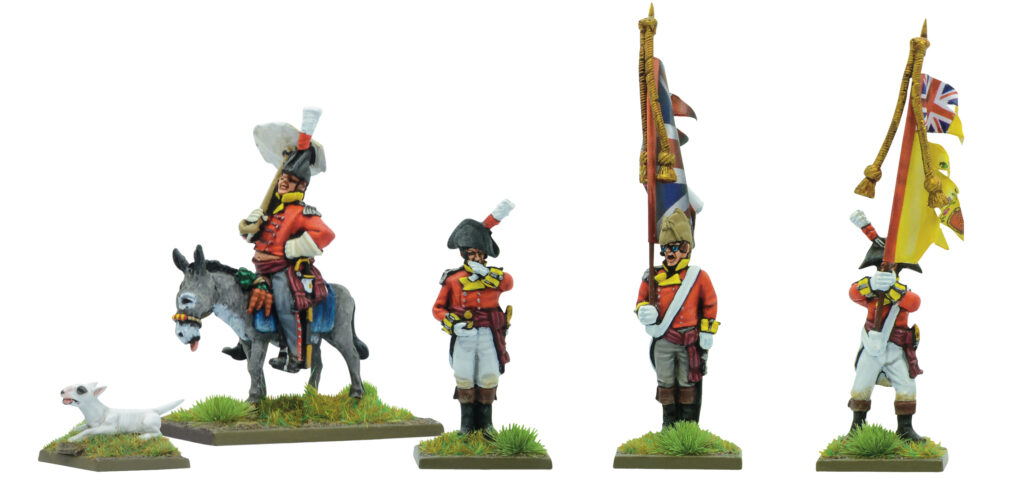
The Third Battalion of Detachments was the smallest, and arguably the most ignoble, of these ad-hoc units. Formed under the nominal command of Lt. Colonel Sir Cecil Melchett (a corpulent former Member of Parliament who had been removed from his previous command due to rank incompetence in virtually all aspects of military leadership), the Third became known as the ‘Fighting Crocks’ and consisted of a motley assortment of malcontents and misfits from across the British Army. Melchett (usually to be found mounted on his long-suffering donkey, Carrots, and accompanied by his faithful bull terrier, Duchess) considered himself a kindly commander, but in reality this was exploited as weakness by the rather less savoury characters making up his officer’s mess and NCO cadre.
Arguably the worst of these men was Captain Llewelyn Dowd, a wealthy and dapper Welshman whose career had been stymied by his taste for married women, which had led to his dismissal in disgrace from his former regiment. An embittered martinet, Dowd was in many ways the real leader of the Third, but was willing to allow corrupt Sergeants to run the day-to-day activities of the Battalion, turning a blind eye to their excesses on the condition that he received regular bribes and kickbacks. Ensigns Piers Frobisher and Digby St. Leger (who formed what was laughably known as the colour party, although the origin of the flags they bore was suspect in the extreme) were at least reasonably decent officers, separated from their units in genuine extremis, but were frequently befuddled by the more cunning Sergeants and browbeaten into compliance by Captain Dowd.
Of the Sergeant’s Mess, none were more despised by the enlisted men than Obediah Postlethwaite. A malignant sadist, Postlethwaite found the situation in the Third very much to his liking, enriching himself at every turn while ruling the lower ranks through fear and intimidation. Clearly a deeply mentally unwell man, little was known of his background, and he seemed to hold no love for anything in the world except for strong drink and his mother (“MOTHERRRRRR!”), but in numerous engagements he proved seemingly unkillable, escaping from desperate situations by the skin of his teeth and returning to torment the battalion once more.
The men he terrorised were an equally unusual bunch – some, such as Devonshire poacher ‘Croucher’ Travis and ‘Rashers’ Cuthbert, a former lord’s chef in civilian life, were fundamentally honest men, the sort of which could be found in any British regiment (and were much appreciated for their contributions to the Third’s meagre rations). Others, however, like former Highlander ‘Mungo’ McGrew and Corporal Bartholomew Bostock, were troublemakers to their core. McGrew was a notorious thief, hated by his fellows, while Bostock, otherwise an excellent soldier, had an unfortunate habit of assaulting senior officers for, as he put it, ‘looking at him funny’. Only his exceptional bravery in combat and encyclopaedic knowledge of the King’s Regulations had saved him from a firing squad, and ironically, he served to curb some of the worst excesses of Captain Dowd. Some men were simply odd, unsuited to military life for a variety of reasons. Clifford Pugh was renowned throughout the Army for his penchant for women’s bonnets, having been flogged twice for their theft, while Elijah Samuels would claim to be the rightful King of England to anyone who would listen – given that he subsisted mostly on raw onions, few would stick around in conversation to hear his evidence!
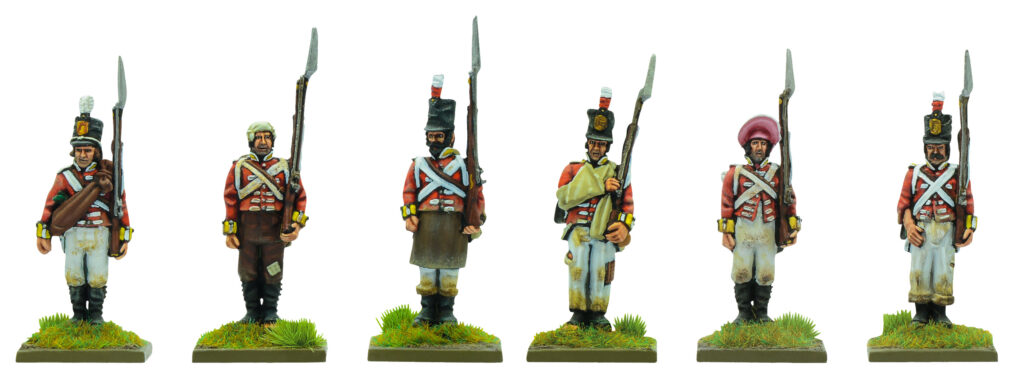
At Grijo, the Third Battalion of Detachments would fight a savage but inconclusive skirmish against the notorious French 73rd Ligne, ‘Le Bouchers‘. Despite their poor reputation, the Third emerged claiming victory, although historians dispute almost all of their account of the engagement. Shortly thereafter they seem to have been disbanded, as Wellington makes no mention of them in his General Order of 12 May 1809, thus bringing to an end the strange existence of one of Britain’s most colourful battalions.
In games of Black Powder, we represent the Fighting Crocks as a Battalion of Detachments (using the Albion Triumphant, Volume One rules), with the additional rules of Marauders, Unreliable, and Tough Fighters. To represent the desire of the ‘real’ battalions to outdo these misfits and ne’er-do-wells, all units in a Command with the Third also become Tough Fighters. In addition, if the commander of a brigade including the Third Blunders when issuing an Order, they must assign a single casualty marker to the Third – this represents some of the less courageous men of the battalion taking advantage of the confusion to slip away into the countryside!
For those wargamers not wanting to field the Fighting Crocks in all their ‘glory’, but instead add a great deal of character to an existing Peninsular force, these fantastic Warlord Resin models will also be available individually in the future – keep an eye on the Newsletter for more details!
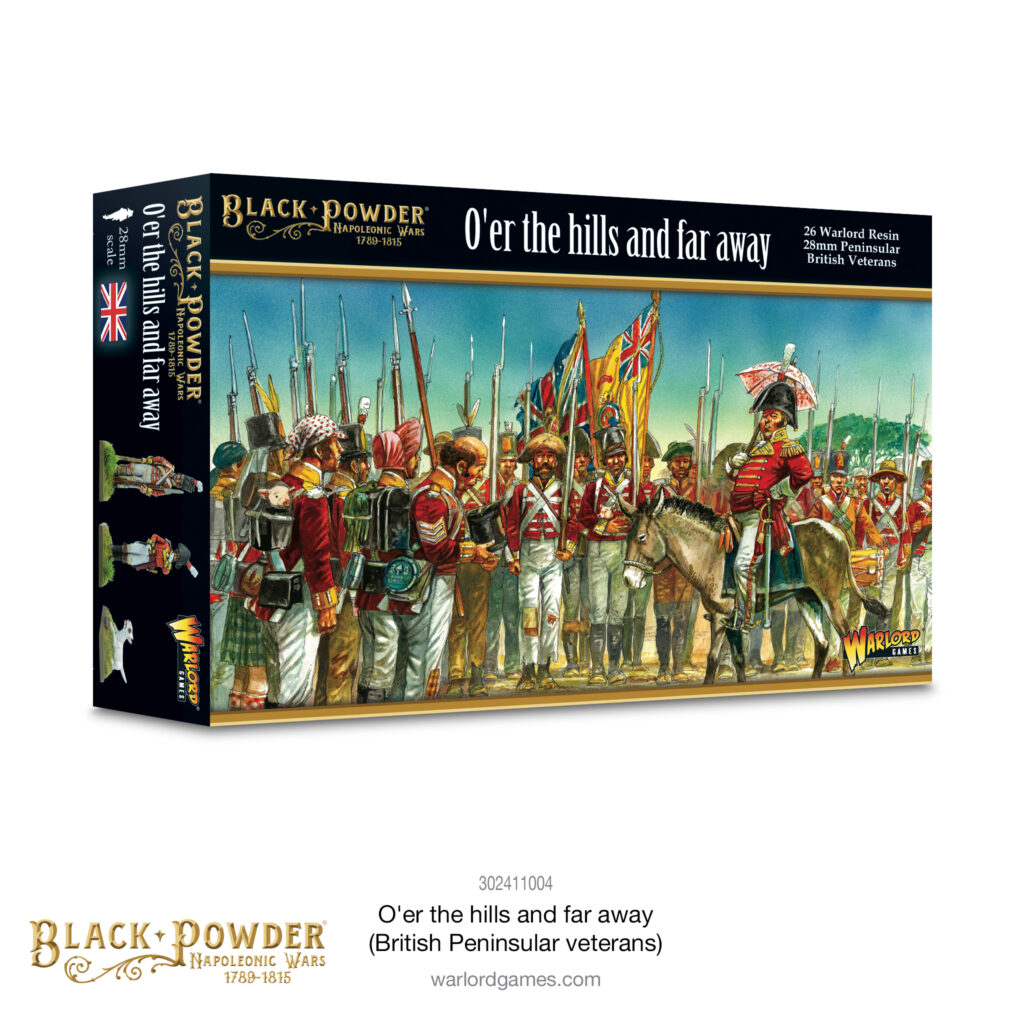
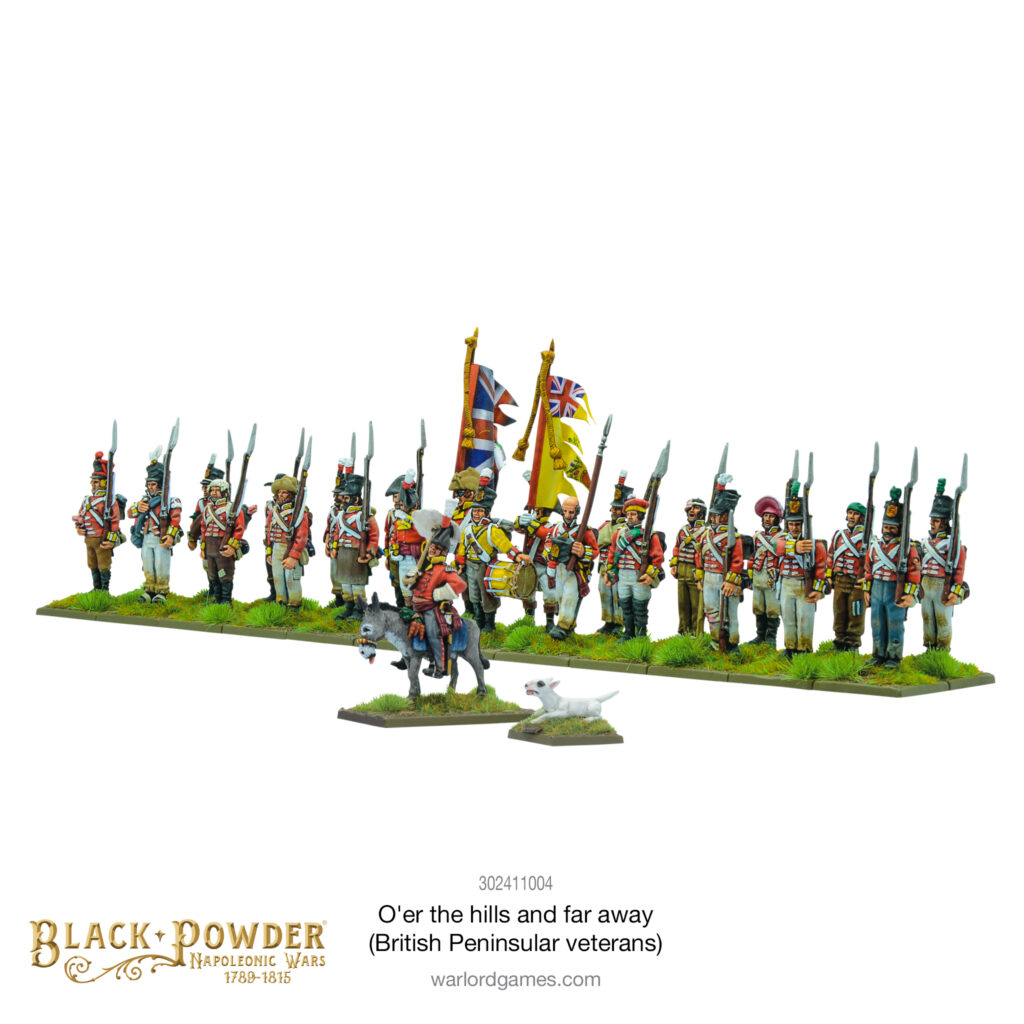
Also Available – Vive L’Empereur!
Murdering their way out of a Spanish prison hulk, Chef de battalion François Léon de Rochebaron and his loyal band of followers began their journey into infamy. After the brutal experience at the hands of his Spanish captors, the once honourable de Rochebaron swore unwavering vengeance on the enemies of France. Thus the legend of the ‘The Butchers’ of the 73rd Line Regiment was born.
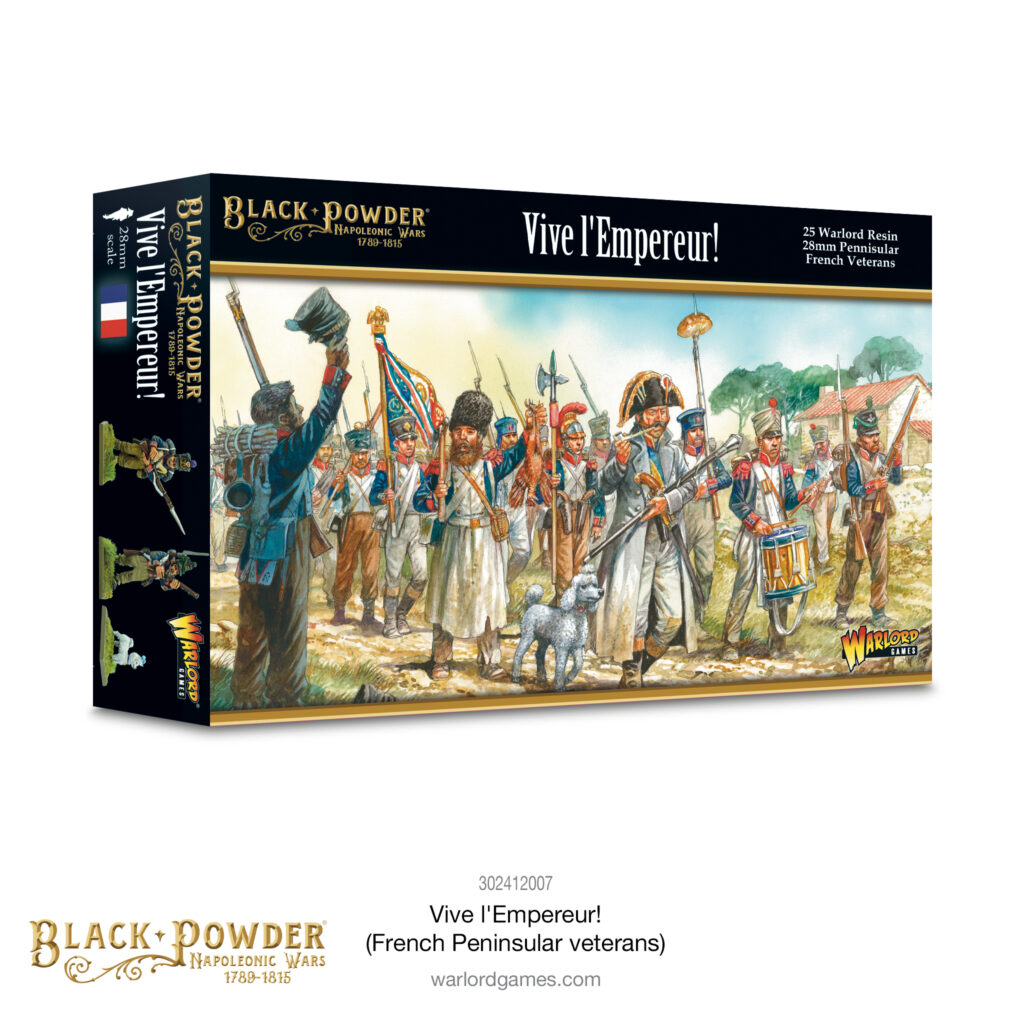
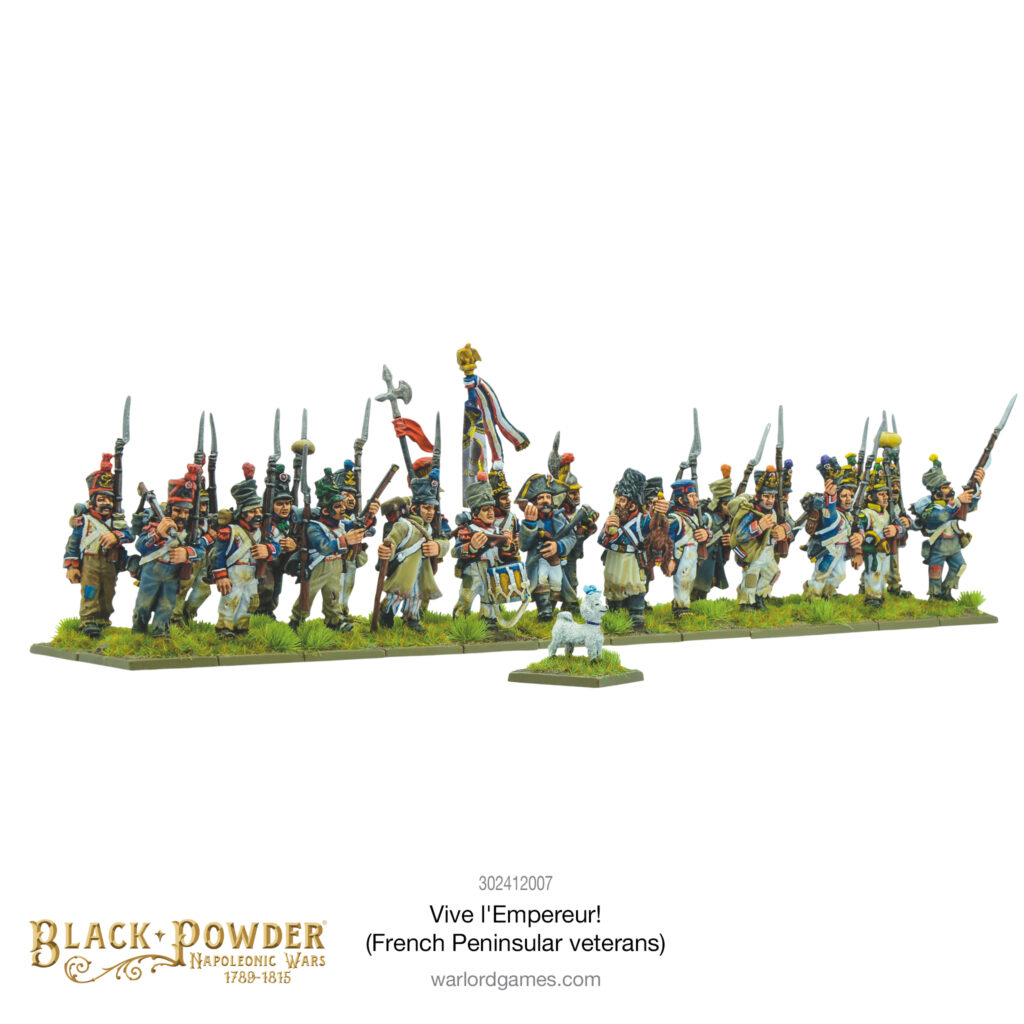
We’ll delve into the deeds of the dastardly individuals of the 73rd Line Regiment in a future feature!
